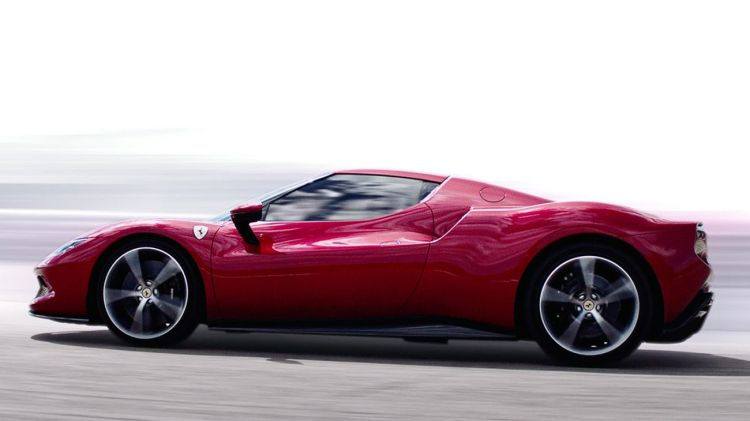FERRARI

Italian brand has plans to develop hydrogen fuel cells
After EU officials outlined plans to convert passenger vehicles to electric traction by 2035, many automakers found it necessary to talk about this issue. Ferrari, in this case, ended up having nothing to add, as it was initially in no hurry to abandon the powerful internal combustion engines, offering them alternative fuel. The Italian manufacturer does not rule out hydrogen fuel cells at the same time.
In the latter, we recall, hydrogen is used to generate electricity, and cars with the proper type of power plant emit only water vapor as an exhaust. Not all automakers unequivocally assess the prospects for hydrogen fuel. Toyota Motor Corporation, which has invested huge funds in developing the two-generation Mirai model, is not yet ready to admit that the future belongs to battery-electric vehicles. Rival Honda Motor, which previously produced a fuel cell passenger car, has recently leaned towards the idea that hydrogen power plants are more appropriate in the truck segment. Daimler and Nikola believe that the development of hydrogen fuel cell plants should not be abandoned, although they are also producing battery-powered trucks at the same time.
This week it became known that Hyundai Motor, which until now was considered an ardent supporter of this type of fuel, abandoned the development of hydrogen trucks. It is predictable that such projects will not have the most profitable economy. Elon Musk, who runs Tesla, has long been opposed to hydrogen fuel cells.
According to Reuters, Ferrari is not only actively investing in the development of solid-state batteries that will solve the problem of mass and range of modern electric vehicles, it is also not ruling out hydrogen fuel cells and is also looking into synthetic fuels for combustion engines. internal combustion, which, while combustion does not emit carbon dioxide. The brand will not introduce the first electric car until 2025, and in the future it hopes to use internal combustion engines as part of its own hybrid sports cars. The main problem with switching to traction batteries at Ferrari is its high weight. Even the Rimac Nivera hypercar, which accelerates from 0 to 100 km/h in less than two seconds, weighs around 2,200 kg, which is comparable to the mass of cargo vans, which clearly lack the dynamics of a sports car.
Volkswagen Group's rival Lamborghini will not launch electric cars until the end of the decade, also betting on hybrids of internal combustion engines and synthetic fuels, but this company has the world's second largest automaker behind it, which aims to overtake the Tesla by 2025 and become the leader in the electric vehicle segment in terms of number of products sold.
Until 2026, the Ferrari line can be expanded from the current 12 to 17 models, when a battery electric car will appear in it, but the next novelty of the Italian brand will be the Purosangue crossover with a 12-cylinder engine. The company now offers four models of rechargeable hybrids. Ferrari plans, according to Reuters, to increase car production by at least 35% by 2025, from 46 to 65 cars a day. The rate of return through 2026 is expected to increase from 35.9% to 38% minimum. The increase in sales volume should help, but it will be important for Ferrari to find the right moment to switch from ICE to other types of engines, so as not to lose financial stability in a world that is moving at full speed towards a future. electric.
Image source: Ferrari

Nenhum comentário:
Postar um comentário